Welcome to Ceramic Review
Ceramic Review is the magazine for contemporary and historical ceramics, ceramic art and pottery.
Ceramic Review Issue 334
July/August 2025
Ceramic Review is the magazine for contemporary and historical ceramics, ceramic art and pottery.
July/August 2025
Corinne Julius investigates a new exhibition at Two Temple Place that aims to re-present Ladi Kwali and the work of black women in contemporary ceramics to a new audience
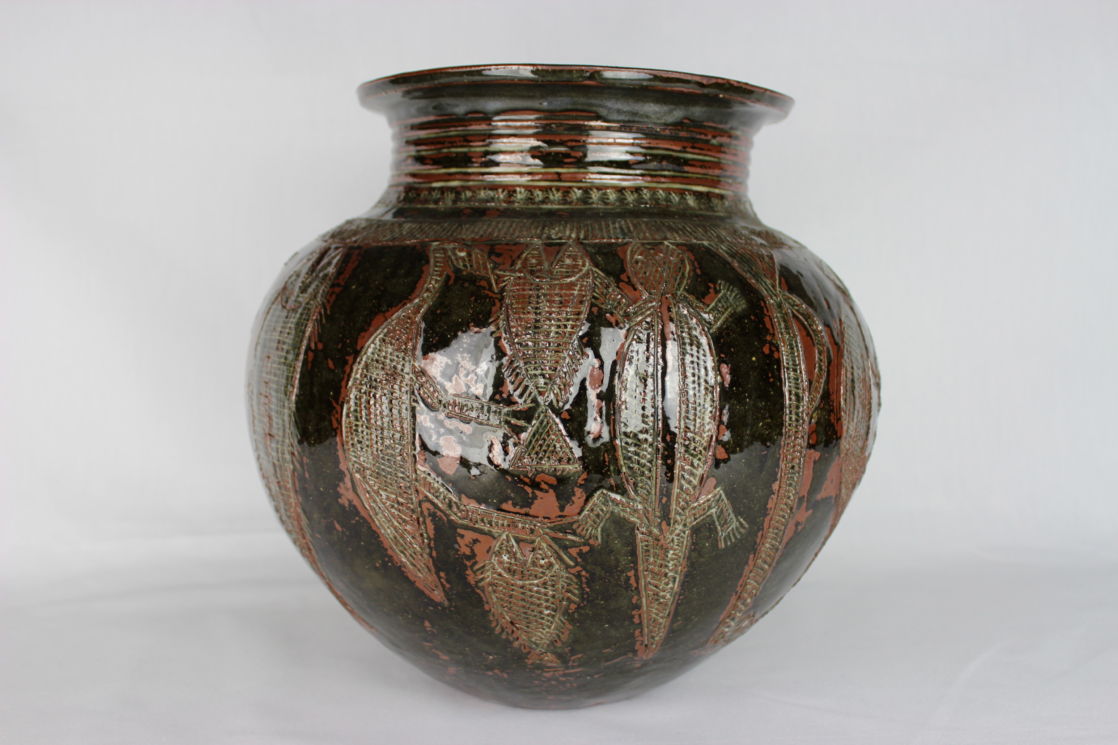
Ladi Kwali, Pot, 1959. Courtesy of York Museums Trust (York Art Gallery)
There are few potters who can claim to be celebrated on bank notes, but Nigerian potter Ladi Kwali has long featured at her throwing wheel on the 20 Naira note in her homeland. Sadly, its low value denomination means that although it is handled regularly, Kwali herself is not much appreciated and not a single piece of her work is on display there. According to Dr Jareh Das the curator of Body Vessel Clay: Black Women, Ceramics & Contemporary Art, this is something her new exhibition aims to rectify.
‘I grew up in Nigeria in the 1990s and was re-introduced to Ladi Kwali when they re-designed the 20 Naira note to include her image. Years later, an encounter with Abuja Pottery at a UK museum spurned a return to Kwali and her astounding achievements as a leading figure in the worlds of Nigerian pottery and British studio pottery,’ explains Dr Das. ‘Body Vessel Clay begins with recognising the hybrid and radical practice of Kwali through to the contemporary generation of black women artists reimagining the material in new ways as a time-based medium with performative qualities. This exhibition attends to clay’s transformative, haptic, malleable and metaphoric potential, while situating ceramics as a continually expanding field.’ This theme of hybridity and what it means for the medium is to say the least a challenging exhibition brief.
Ladi Kwali (1925-1984) came from a matriarchal line of Gwari potters and was taught traditional techniques of coiling, pinching and then stretching the clay, by her aunt. Water jars and other functional wares were fired in an open fire of dry vegetation and decorated with incised geometric and stylized figurative patterns, often lizards, birds and insects, which as well as being ornamental afforded a better grip on the jars.
CREATIVE WORLDS
Kwali was well established and her largely functional pots were even collected by the local Emir. He brought her to the attention of the colonial officer and ceramicist Michael Cardew who set up the Pottery Training Centre in Abuja in 1951 at the behest of the colonial government. This aimed in a rather paternalistic way to ‘educate’ Nigerian potters to produce more commercial tableware that would supposedly appeal to the emerging middle classes. Today it is hard to see Cardew’s work outside a colonial dynamic, but at the time the training centre brought together the worlds of indigenous Nigerian and British studio pottery, stimulating a new wave of creativity.
Male potters were esteemed above women, however throughout 1955 Kwali quickly learned to throw, making lidded and unlidded bowls. Her aptitude was so striking that she soon became a star of the training centre and was taken by Cardew on international tours to promote it. Intriguingly she would give live demonstrations and on two occasions refused to perform until her pay was increased.
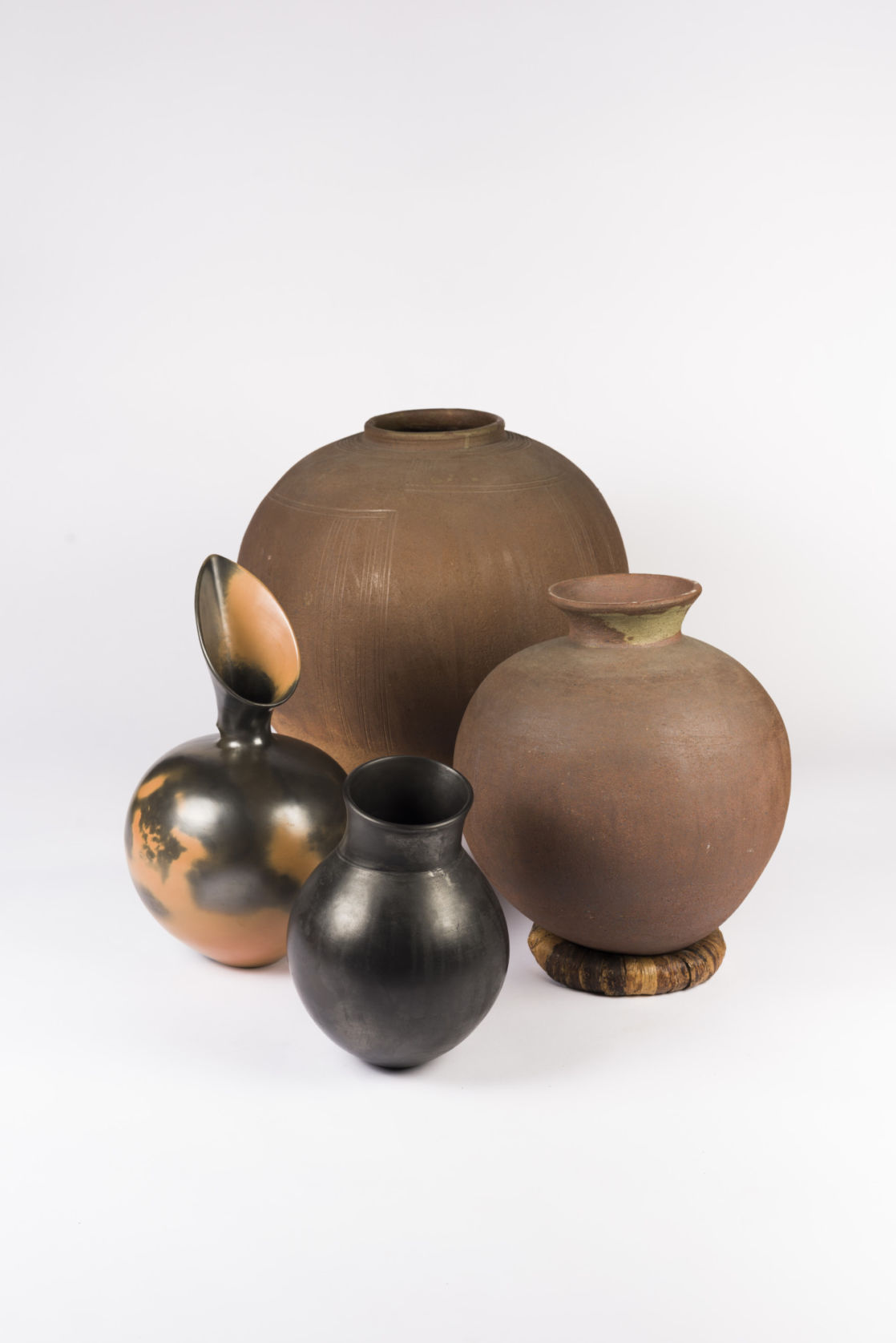
Magdalene Odundo, Group of pots. © Magdalene A.N. Odundo/York Museums Trust. Courtesy of York Museums Trust (York Art Gallery)
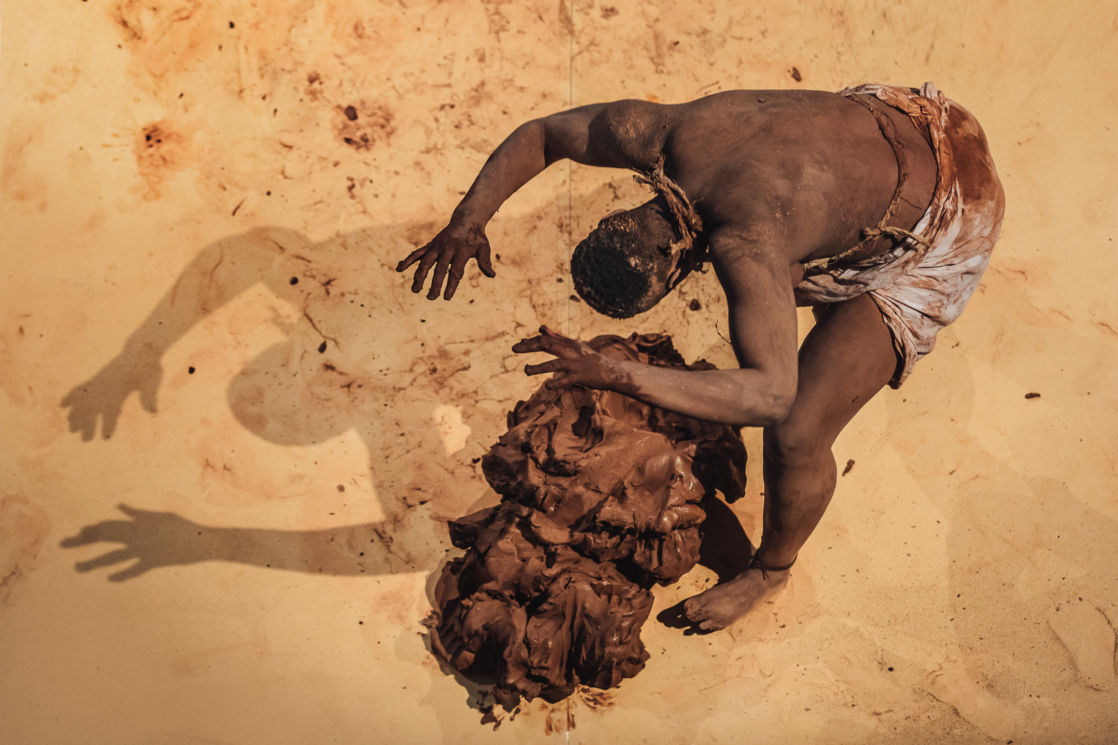
Vivian Chinasa Ezugha, Uro, a SPILL Commission at SPILL Festival 2018, photo by Guido Mencari.
She thoroughly enjoyed her making and despite the hybridisation of her work, three major traditional Gwari shapes remained in her repertoire: the randa (a large water storage vessel); the kasko (a household storage pot) and the tulu (an elaborately decorated storage pot often used in religious festivals). Her impressed decoration was created by rolling pieces of home-made string or wooden roulettes over the clay surface and her sgrafitto decoration was made using a blade-like palm rib for the big pots and a porcupine quill for smaller thrown ware. There are 20 of her pieces from UK collections in the show.
KWALI’S LEGACY
Kwali became hugely influential, the most famous of her students was Dame Magdalene Odundo, who was introduced to her by Cardew in 1974 (shortly before the centre closed for good.) Odundo didn’t fully appreciate the impact of Kwali on her, until her final year at the Royal College of Art. ‘I was in awe of Ladi Kwali – she had an amazing presence,’ Odundo explains. ‘Every time I walk around my work, I think of her. She opened up my horizons. I started appreciating [through her work] the longevity and universality of the art in other African countries. The work of Ladi Kwali was absolutely poetic. She had a sense of geometry in her bones and could see form as it was being made.’
A selection of Odundo’s human-like vessels, combining techniques used by ancient Greek and Roman ceramicists will be on show, as well as work by a younger generation of international, contemporary black women artists working with clay in radical new ways, in part influenced by Kwali. This influence may be somewhat obscure to those not schooled in black women’s ceramics, something the curator aims to explain. Nearly all her other chosen potters have a political and social intent particularly referencing black women’s experience, which is manifested in their work. Most work with performance rather than as traditional ceramicists, though Kwali did ‘perform’ in her throwing demonstrations.
Perhaps the most obvious connection is Searching for Kouame Kakaha: A celebration of the unnamed women of clay; our shared mothers and grandmothers by the London-based ceramicist of Spanish and Equatorial Guinean heritage, Bisila Noha. Her work draws on her research and explorations into Kwali’s practice and influence as well as that of Kouame Kakaha (a woman potter born Tanoh Sakassou in Ivory Coast, c.1960). ‘I aim to challenge Western views on art and craft,’ Noha explains. ‘To question what we understand as productive and worthy in capitalist societies and to reflect upon the idea of home and oneness, pulling from the personal experiences in different pottery communities.’
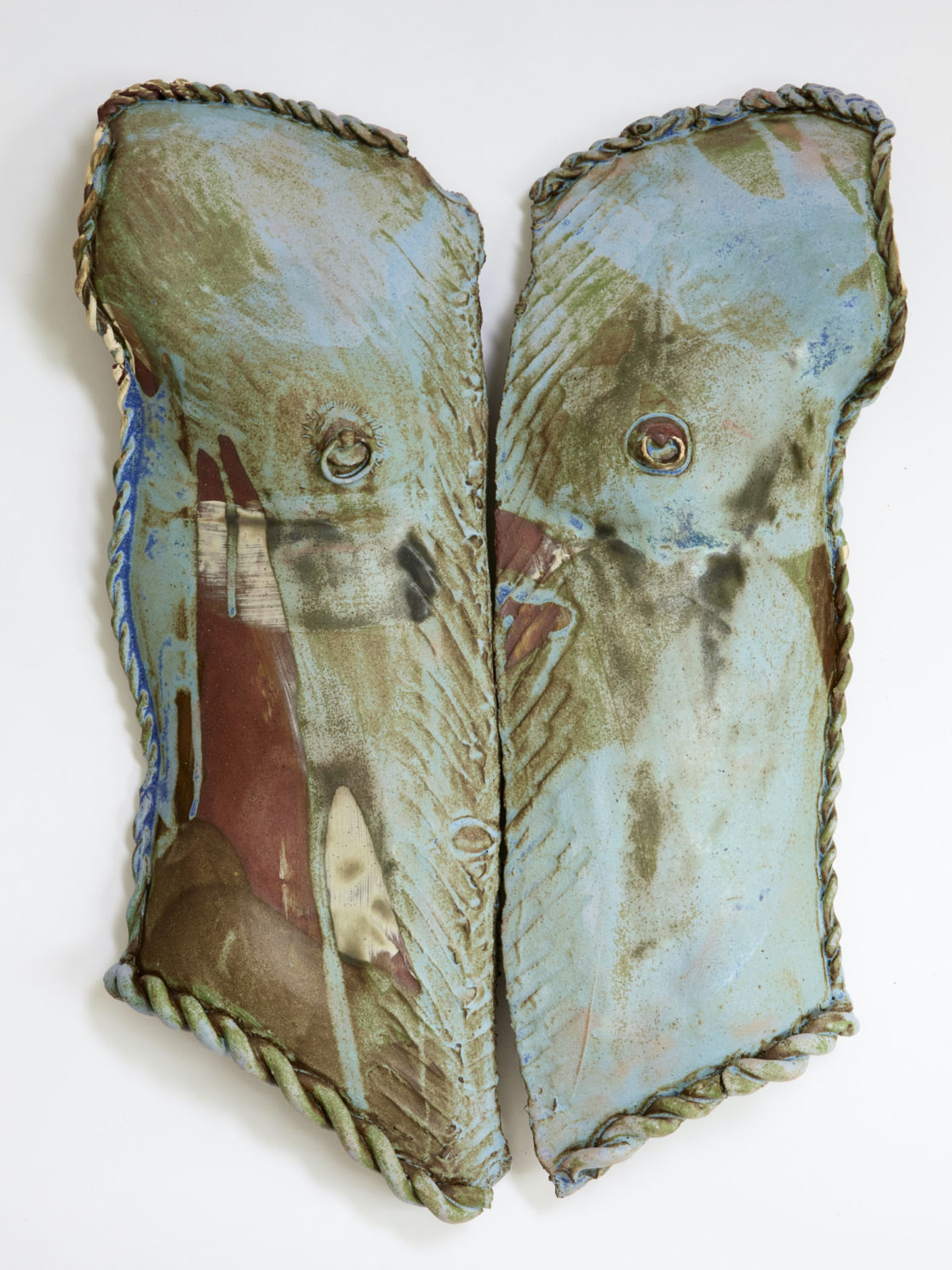
Phoebe Collings-James, The subtle rules the dense 2021. Courtesy of the Artist and Camden Arts Centre. Photo: Rob Harris
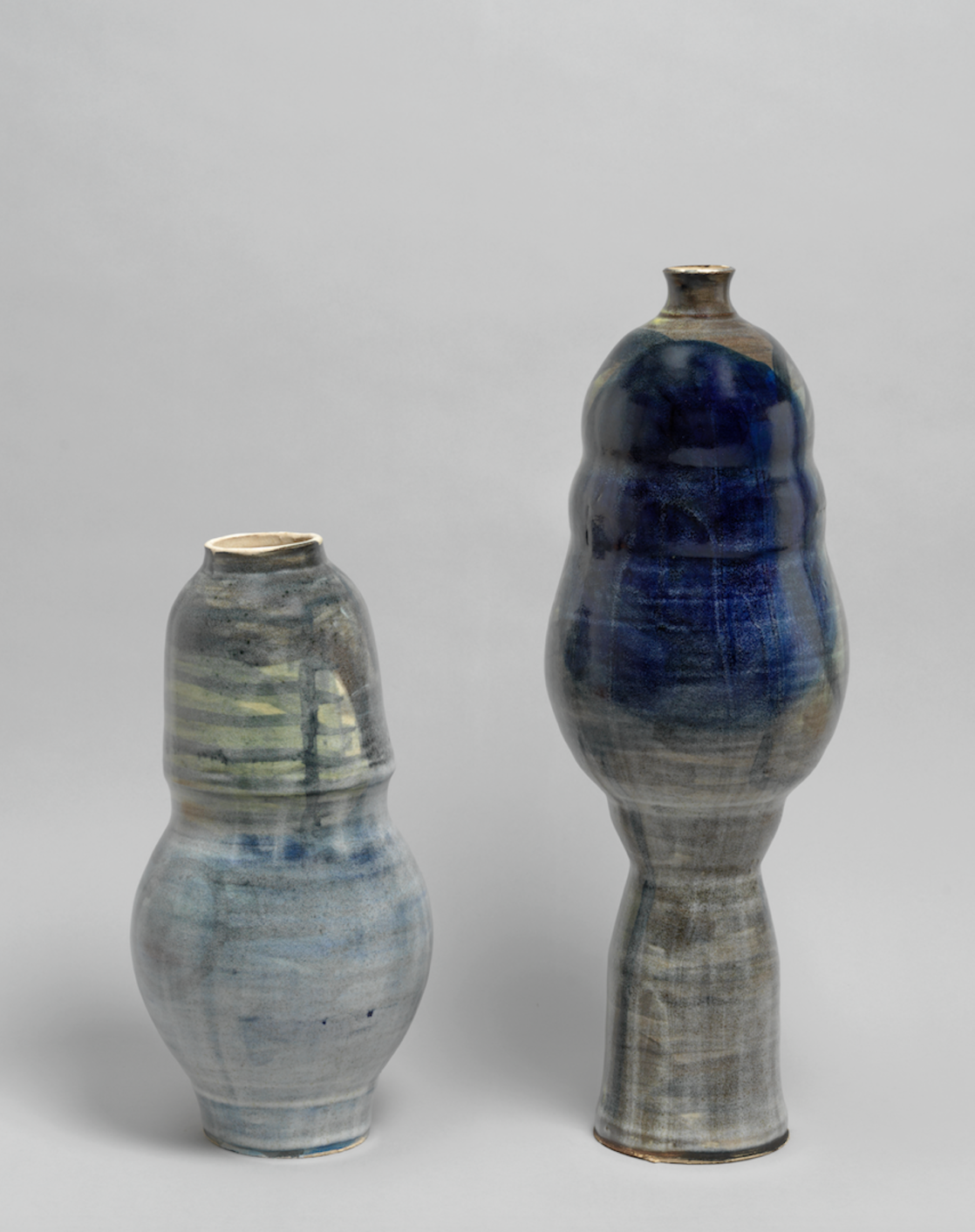
Shawanda Corbett, I’ll tell you what (From: Neighbourhood Garden), 2020, Courtesy the Artist and Corvi-Mora, London. Photo: Marcus Leith.
Noha explores how pottery, especially that made by women in the Global South, has been overlooked or disparaged. Her two-legged vessels (a form she discovered had already been explored by Kakaha) are a representation of the feeling of in-betweenness she often feels given her background: two legs, two parents, two cultures, two races, combined to create something new. Responding to the legacies of Kwali she pursues her own voice while remaining rooted and connected to earlier traditions.
PERFORMATIVE CLAY
The curator’s background in performance is highlighted by her selection of ‘performers’ interacting with clay, such as Yorkshire born artist and writer Jade Montserrat. In her film performance Clay, 2015, Montserrat uses her body in the landscape to dig and build with clay, alluding to humans being moulded from the earth as well as to her rural childhood in Yorkshire.
Chinasa Vivian Ezugha also interacts with clay and water both on her body and on canvas. For the exhibition she alludes to her six-hour performance Uro, 2018, through photography and a new conceptual sculpture using 30kg of raw clay that became a force she both worked with and against during the performance. The exhibition will also feature Julia Phillips’s film Burdened, 2018, in which a female body covered in a black body suit, walks then stomps. The torso of the figure is armless, as if the weight that is being carried is invisible. Intercut are two sequences: one, a growing pile of clay that is thrown into the frame; the other, bare feet in what seems to be an ever-deeper mound of mud.
Performance is also key to Phoebe Collings-James who set up Mudbelly, an accessible, free ceramics programme taught by black ceramicists. Her works cross sculpture, video and sound. Her ongoing series The subtle rules the dense, 2021, is a set of torso casings that reference Roman armour plates, ‘relics of the reckless pursuit of conflict.’ Her sculptural pieces built by hand and on the wheel and decorated with layers of slips and oxides are engaged with an appreciation of the haptic and the erotic.
New York born Shawanda Corbett expresses her ideas in poetry, ceramics and dance. She creates colourful sculptural vessels featuring paired forms that explore common stereotypes from ‘the Hood’ but are imbued with more humanity. Corbett generates dances around them.
The contemporary makers with the exception of Odundo are quite challenging to more conventional studio ceramics and have strong auto-biographical and cultural associations. The works placed around the gallery have a strong resonance with place and tradition, though expressed in very different ways between the earlier two makers and the younger ones. Dr Das’ curation aims to re-present Kwali to the nation, which the show will do. She also intends to present clay as a medium for personal and political statements and the creation of new aesthetics. It is a brave and challenging selection.
Body Vessel Clay: Black Women, Ceramics & Contemporary Art, until 24th April, Two Temple Place; twotempleplace.org
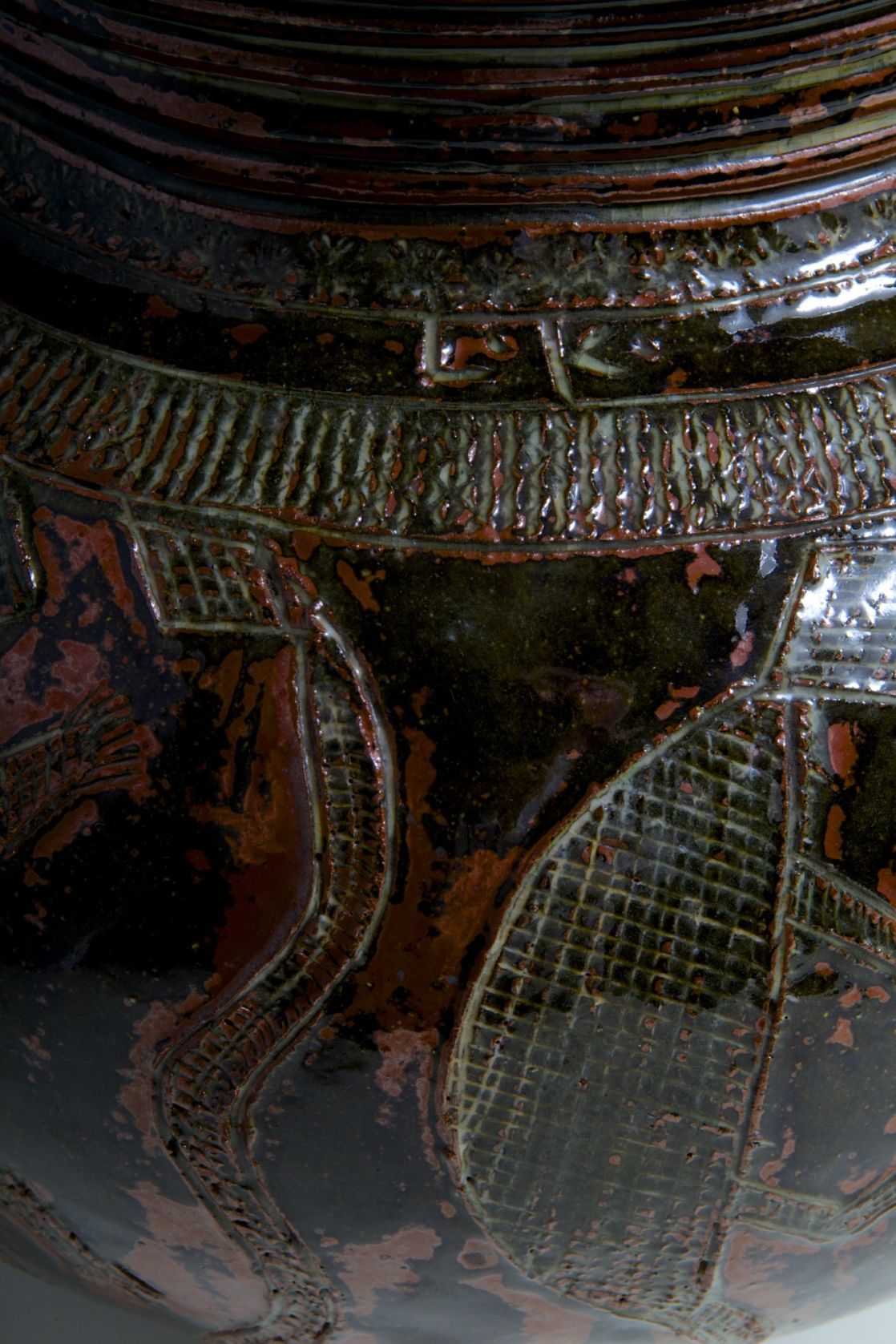
Ladi Kwali, Detail of Pot, 1959. Courtesy of York Museums Trust (York Art Gallery)